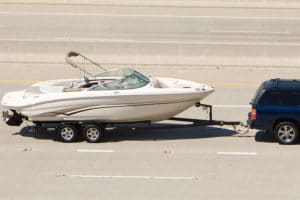If you can’t sail your boat overseas, you may need it to meet you where you’re going. When planning to ship your boat internationally, there are a couple different options to explore:
- Roll-on/Roll-off: Also called “RO/RO,” your boat stays on a trailer (either your own or the carrier’s) for the entire trip. This is the most common option in international boat shipping. To reduce the overall height and volume of your boat remember to remove or lower booms, antennas, and radar towers. This will greatly reduce costs as the shipping companies will usually measure the overall height, including the trailer.
- Enclosed Container: Most large shipping vessels carry these containers. You may want to choose this option if your boat fits within the standard dimensions (40’ long, 7’10” high, 7’8” wide). Containerized services are usually much less expensive than RO/RO, but the height requirement includes any trailer height as well. Make sure to ask carriers about different container options available.
- Flat Rack: Typically used for over-sized boats. A boat is shipped in its own custom cradle, strapped into the flat rack, and secured to the vessel. It is highly recommended that items such as arches or the bridge be removed and safely secured. By removing bulking items you can save hundreds of dollars on your freight.
- Submersion: Your boat is loaded and unloaded directly from the water.
- Whenever shipping anything overseas, make sure to prepare any legal and customs documents ahead of time. A good place to start would be with the foreign embassies or consulates in the country to which you are transporting your boat for more information about proper documentation. By investigating and following the correct registration procedures you will save yourself from undue stress, wasted time and any potential hazards.
International Boat Transport Preparations
Winterizing your boat before shipping is highly recommended. Failure to do so can result in ruined engines and interior damage. Shrink wrapping is an option that is highly valued for keeping your boat clean and safe, and can also provide an additional level of safety while your boat is in transit. It is also a good idea to ship your valuable electronic components separately so they do not get lost during shipping.
As always, make sure you are comfortable with your shipper. Don’t be afraid to ask questions about transporting your boat or asking for advice on how to best ship your boat internationally. Most carriers have decades of experience and can guide you to the cheapest, safest way to ship your boat overseas.
Content updated March 26, 2019




